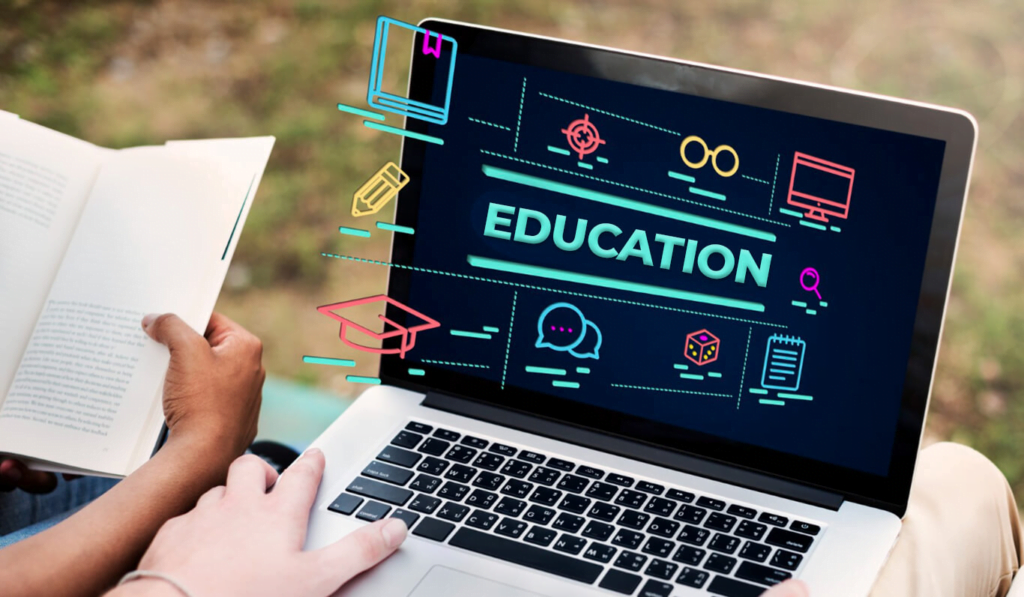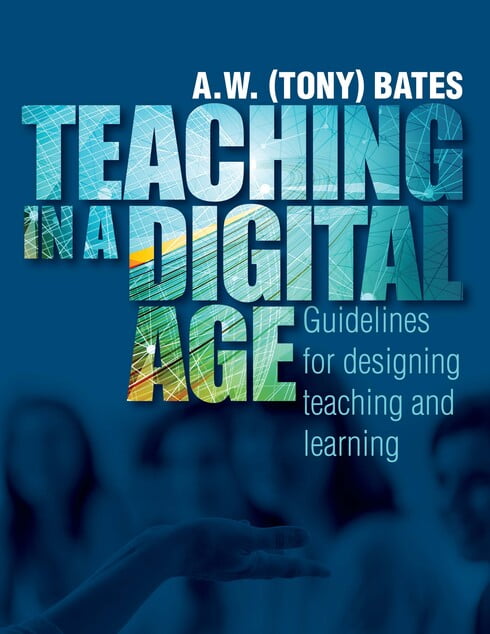
Teaching Textbooks: Revolutionizing Education in the Digital Age
In the fast-paced digital era, education is undergoing a transformative shift, and at the forefront of this revolution are Teaching Textbooks. Gone are the days of traditional learning methods; today, students and educators alike are embracing the power of technology to enhance the educational experience.
The Evolution of Teaching Textbooks

Teaching Textbooks have come a long way from their humble beginnings. Initially introduced as supplementary materials, they have evolved into comprehensive digital learning platforms that cover a wide range of subjects. The transition from static printed materials to dynamic, interactive digital content marks a significant leap in the way we approach education.
Benefits of Teaching Textbooks

3.1 Ease of Accessibility
One of the key advantages of Teaching Textbooks is the ease with which students can access educational content. Whether at home, in transit, or in a classroom setting, learners can delve into their lessons at their own pace, breaking free from the constraints of traditional classrooms.
3.2 Personalized Learning
Teaching Textbooks cater to individual learning styles, providing a personalized learning experience for each student. Adaptive algorithms assess a student’s strengths and weaknesses, tailoring lessons to address specific needs, fostering a deeper understanding of the subject matter.
3.3 Interactive Engagement
Engagement is crucial in any learning environment, and Teaching Textbooks excel in creating interactive and immersive experiences. Incorporating multimedia elements, simulations, and quizzes, these platforms make learning enjoyable and effective.
How Teaching Textbooks Improve Student Performance

4.1 Adaptive Learning Technology
The heart of Teaching Textbooks lies in their adaptive learning technology. This innovative approach ensures that students progress at their own pace, reinforcing concepts until mastery is achieved. This adaptive model minimizes the risk of students falling behind or feeling overwhelmed.
4.2 Real-time Feedback
Immediate feedback is a game-changer in education. Teaching Textbooks provide real-time feedback, allowing students to track their progress and address misconceptions promptly. This fosters a sense of accountability and empowers students to take control of their learning journey.
4.3 Gamification in Education
Gamification elements incorporated into Teaching Textbooks turn learning into a rewarding experience. Achievements, badges, and interactive challenges motivate students, making education not just a task but an exciting journey.
Challenges and Solutions

5.1 Overcoming Technological Barriers
While Teaching Textbooks offer unparalleled benefits, there are challenges to overcome. Technological barriers, such as access to devices and the internet, can hinder implementation. However, collaborative efforts between educational institutions and policymakers are essential to bridge this digital divide.
5.2 Addressing Concerns of Personalized Learning
Some critics express concerns about the potential drawbacks of personalized learning, fearing it may lead to isolation. Addressing these concerns involves striking a balance, ensuring that while students enjoy personalized learning experiences, they also engage in collaborative activities to foster social skills.
Integration into Traditional Classrooms

6.1 Blended Learning Approaches
To maximize the impact of Teaching Textbooks, educators are adopting blended learning approaches. This integration of digital resources with traditional teaching methods creates a holistic educational environment, catering to diverse learning styles.
Download Free Worksheets for kindergarten and Elementary School Here
6.2 Teacher Support and Involvement
Teaching Textbooks do not replace teachers; they complement them. Teacher involvement remains crucial, guiding students, providing additional support, and overseeing the overall learning experience. This symbiotic relationship between technology and teaching ensures a comprehensive educational journey.
Impact on Student Motivation
Teaching Textbooks breathe new life into education by boosting student motivation. The interactive nature of these platforms, coupled with gamification elements, transforms learning from a mundane task into an exciting adventure. Motivated students are more likely to actively participate in their education, leading to improved academic performance.
Parental Involvement and Support
Parents play a pivotal role in a child’s education, and Teaching Textbooks encourage parental involvement. With insights into their child’s progress and areas of improvement, parents can actively support and reinforce learning at home, creating a collaborative educational ecosystem.
Case Studies: Success Stories with Teaching Textbooks
As Teaching Textbooks continue to gain popularity, success stories abound. Students who once struggled in traditional classrooms now thrive with the personalized, adaptive approach of these platforms. These case studies highlight the transformative impact Teaching Textbooks can have on individual learning journeys.
Future Trends and Innovations

10.1 Artificial Intelligence in Education
The future of Teaching Textbooks lies in the integration of artificial intelligence. AI algorithms will further enhance adaptive learning, providing even more personalized and tailored educational experiences for students.
10.2 Virtual Reality and Augmented Reality Learning
Immersive technologies like virtual reality (VR) and augmented reality (AR) are on the horizon for Teaching Textbooks. These innovations will take education beyond the confines of screens, creating virtual environments that bring subjects to life.
Critics’ Perspectives: Debunking Myths
11.1 Misconceptions About Reduced Teacher Roles
Critics often argue that Teaching Textbooks diminish the role of teachers. However, the reality is that these platforms empower educators by providing tools to cater to individual student needs, allowing teachers to focus on mentorship and guidance.
11.2 Concerns Regarding Social Interaction
Another common concern is the potential reduction in social interaction. Teaching Textbooks, when implemented thoughtfully, can enhance social skills through collaborative online activities, breaking down geographical barriers and fostering global
connections.
Addressing Educational Inequality

12.1 Bridging the Educational Gap
Teaching Textbooks have the potential to bridge the educational gap, providing quality resources to students in underserved communities. Initiatives aimed at ensuring equal access to technology can significantly contribute to addressing educational inequality.
12.2 Ensuring Inclusive Access
To truly make a difference, efforts must be made to ensure inclusive access. Partnerships between governments, NGOs, and tech companies can play a vital role in making Teaching Textbooks available to students worldwide, regardless of socio-economic background.
Global Impact of Teaching Textbooks

13.1 Breaking Language Barriers
Teaching Textbooks transcend language barriers, offering content in multiple languages. This inclusivity opens up educational opportunities for students globally, fostering a sense of interconnectedness in the pursuit of knowledge.
13.2 Cultural Adaptability
The adaptability of Teaching Textbooks to different cultures is a testament to their global impact. Cultural nuances are considered, creating a learning environment that respects and celebrates diversity.
The Role of EdTech Companies in Shaping Teaching Textbooks

EdTech companies play a crucial role in shaping the landscape of Teaching Textbooks. Their commitment to innovation, user experience, and continuous improvement drives the evolution of these platforms, ensuring they remain at the forefront of educational technology.
Conclusion
Teaching Textbooks have emerged as a beacon of change in the education landscape. From personalized learning experiences to global impact, these platforms are redefining how we approach education. As we embrace the digital age, the symbiotic relationship between technology and education promises a future where every student can thrive.
FAQs
- Are Teaching Textbooks suitable for all age groups?
- Teaching Textbooks cater to a wide range of age groups, from elementary to higher education.
- How do Teaching Textbooks address diverse learning styles?
- The adaptive learning technology in Teaching Textbooks tailors content to individual learning styles, ensuring an inclusive approach.
- Can Teaching Textbooks be used in traditional classrooms?
- Yes, Teaching Textbooks can be integrated into traditional classrooms through blended learning approaches.
- Do Teaching Textbooks replace the role of teachers?
- No, Teaching Textbooks complement teachers by providing tools for personalized learning, allowing educators to focus on mentorship.
- How can Teaching Textbooks contribute to global education initiatives?
- Teaching Textbooks contribute to global education by breaking language barriers and fostering cultural adaptability.


What an insightful article! Your ability to break down complex topics into easily understandable points is truly commendable. I appreciate the thorough research and the engaging writing style that keeps readers hooked from start to finish. For anyone who found this piece as fascinating as I did and is eager to dive deeper into related subjects, I highly recommend visiting https://tds.rida.tokyo/com. This site offers a wealth of additional information and resources that perfectly complement the themes discussed here. Thank you for sharing your knowledge and providing such valuable content. I look forward to reading more of your work in the future!
Great article! I appreciate the clear and insightful perspective you’ve shared. It’s fascinating to see how this topic is developing. For those interested in diving deeper, I found an excellent resource that expands on these ideas: check it out here. Looking forward to hearing others’ thoughts and continuing the discussion!